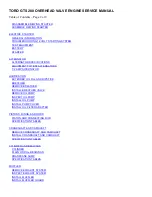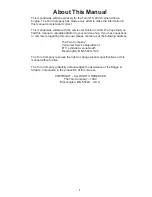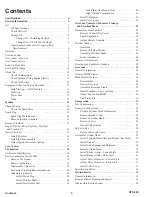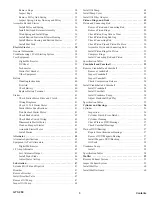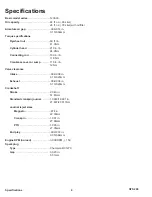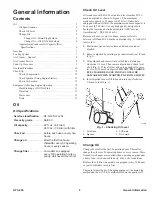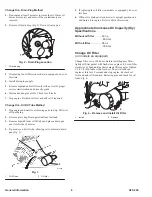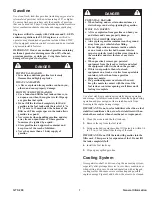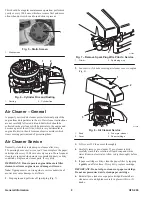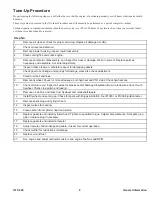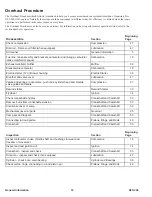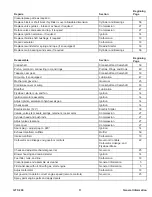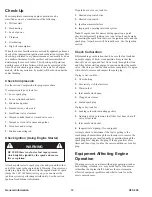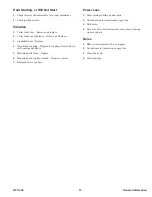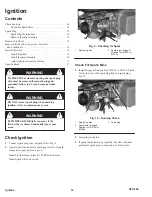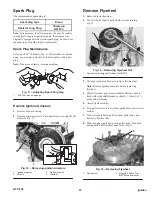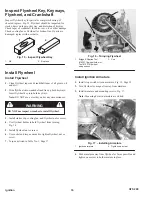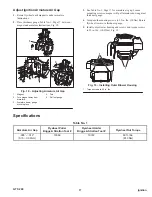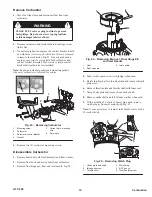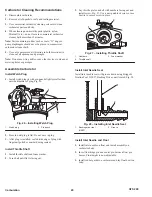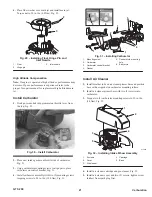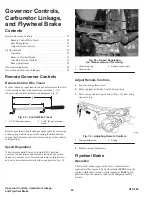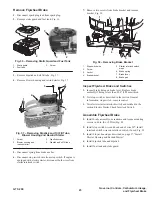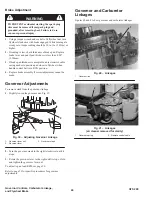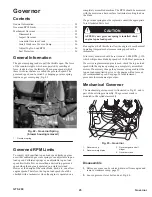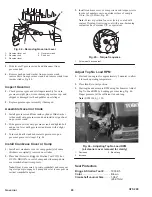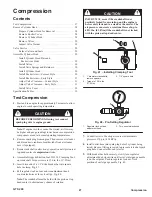
12
GTS 200
General Information
Check-Up
Most complaints concerning engine operation can be
classified as one or a combination of the following:
1. Will not start
2. Hard starting
3. Lack of power
4. Vibration
5. Overheating
6. High oil consumption
When the cause of malfunction is not readily apparent, perform a
check of the compression, ignition, and carburetion systems. This
check-up, performed in a systematic manner, can usually be done
in a matter of minutes. It is the quickest and surest method of
determining the cause of failure. This check-up will point out
possible cause of future failures, which can be corrected at the
time. The basic check-up procedure is the same for all engine
models, while any variation, by model, will be shown under the
subject heading.
Check Compression
See the section Compression for proper procedure.
If compression is poor, look for –
1. Loose spark plug
2. Loose cylinder head bolts
3. Blown head gasket
4. Burned valves, valve seats
5. Insufficient valve clearance
6. Warped cylinder head or warped valve cover
7. Warped or worn valve stems and guides
8. Worn bore and/or rings
9. Broken connecting rod
Check Ignition (Using Engine Starter)
WARNING
BE SURE there is no fuel or fuel vapor present,
which might be ignited by the spark and cause a
fire or explosion.
Attach a spark tester to spark plug wire and ground the other
end of the tester to the engine block. Warning: Do not remove
spark plug. Spin the flywheel with the engine starter. If spark
jumps the
.
166” (4.20mm) tester gap, you can assume the
ignition system is performing satisfactorily. See the section
Ignition for additional information.
If spark does not occur, look for –
1. Shorted stop switch wire
2. Shorted stop switch
3. Ignition armature failure
4. Improperly operating interlock system
Note: If engine runs but misses during operation, a quick
check to determine if ignition is or is not at fault can be made
by inserting the spark tester between the ignition cable and the
spark plug. A spark miss will be readily seen. See the Ignition
section.
Check Carburetion
Before making a carburetion check, be sure the fuel tank has
an ample supply of fresh, clean gasoline. Be sure that the
shut-off valve is open and fuel flows freely through fuel line
and filter before starting engine. Inspect and adjust the needle
valve. Check to see that the choke closes completely. If engine
will not start, remove and inspect the spark plug.
If plug is wet, look for –
1. Over choking
2. Excessively rich fuel mixture
3. Water in fuel
4. Inlet needle stuck open
5. Clogged air cleaner
6. Fouled spark plug
If plug is dry, look for -
1. Leaking carburetor mounting gaskets
2. Gummy or dirty carburetor, fuel filter, fuel lines, shut-off
valve or fuel tank
3. Inlet needle stuck shut
4. Inoperative fuel pump (if so equipped)
A simple check to determine if the fuel is getting to the
combustion chamber through the carburetor is to remove the
spark plug and pour a small quantity of gasoline through the
spark plug hole. Replace the plug. If the engine fires a few
times and then stops, look for the same conditions as for a dry
plug.
Equipment Affecting Engine
Operation
What appears to be a problem with engine operation, such as
hard starting, vibration, etc., may be the fault of the mower
rather than the engine itself. Listed are the most common
effects of equipment problems and what to look for as the
most common cause.


